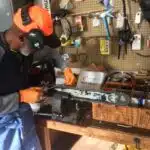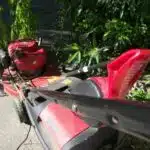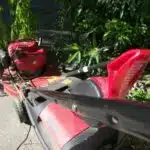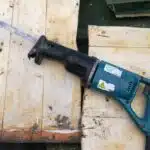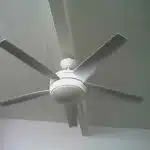Lawn mower blades are the most important component of a lawn mower, as they are responsible for cutting the grass and maintaining the health of your lawn. However, over time, these blades can become dull due to prolonged use and exposure to debris. A dull blade not only makes it harder to cut grass but also damages the turf, resulting in an unhealthy lawn. Therefore, it is essential to sharpen lawn mower blades regularly to ensure optimal performance and longevity.
As a lawn mower repair technician, I have seen many cases where people were injured while attempting to sharpen their lawn mower blades without proper knowledge or tools. This not only jeopardizes their safety but also leads to ineffective results. In this article, I will guide you through the process of sharpening your lawn mower blades safely and effectively. With my years of experience in repairing and maintaining various types of mowers, I will provide you with step-by-step instructions that will help you achieve a sharp edge on your blades without compromising your safety or damaging the equipment.
Understanding The Importance Of Sharp Lawn Mower Blades
As a lawn mower repair technician, I understand the importance of regular maintenance when it comes to keeping your lawn mower in good condition. One crucial aspect of this is ensuring that the blades are effectively sharpened. By doing so, you can guarantee that your lawn will be mowed to perfection without any damage to the grass. Not only does this make your lawn look great, but it also promotes healthy growth and prevents disease.
While many people may opt for DIY blade sharpening methods, there are several benefits to using professional blade sharpening services. First and foremost, professionals have the tools and knowledge needed to ensure that your blades are sharpened correctly and safely. They can also identify any issues with the blades or mower itself that may need addressing before further damage occurs.
Ultimately, having sharp lawn mower blades not only makes mowing easier and more efficient, but it also extends the life of your equipment. As a result, regular maintenance should be a top priority for anyone who wants their investment to last. In the next section, we’ll explore some signs that your lawn mower blades may need sharpening so you can stay ahead of any potential issues.
Signs That Your Lawn Mower Blades Need Sharpening
Understanding the importance of having sharp lawn mower blades is only half the battle. Knowing when to sharpen them is equally important. There are several signs that your lawn mower blades need sharpening, and it’s important to be aware of them so you can maintain a healthy lawn.
Firstly, if you notice that your grass looks frayed or torn after mowing, this is a clear indication that your blades need to be sharpened. Another sign is if you notice that your lawn has started to yellow or brown in patches after mowing. This is because dull blades tear at the grass rather than cutting it cleanly, which can lead to disease and unsightly patches. Lastly, if you find yourself having to go over the same area multiple times to get an even cut, this could also be a sign that your blades need attention.
It’s essential for all lawn mower owners to understand the importance of maintenance when it comes to their equipment. While there are DIY methods for sharpening blades, it’s important to note that professional sharpening services exist for those who may not feel confident in their abilities or don’t have access to the right tools.
When deciding whether to sharpen your own blades or seek professional help, consider factors such as cost and time investment required for each option. Additionally, keep in mind that improper blade maintenance can lead to further damage and costly repairs down the line. By taking proactive measures and seeking out professional help when necessary, you can extend the life of your lawn mower and ensure a healthy lawn year-round.
When it comes time for blade maintenance, choosing the right tools for the job is crucial in ensuring a successful outcome. In our next section, we’ll discuss what tools are necessary for both DIY and professional sharpening methods and how they differ from one another.
Choosing The Right Tools For The Job
As a lawn mower repair technician, it is essential to emphasize the importance of selecting the appropriate tools for sharpening lawn mower blades. The right tools ensure not only effective sharpening but also safe handling. Some of the must-have tools include a vice grip, file or grinder, protective gloves, and safety glasses.
When choosing a file or grinder, consider its size and type. A 10-inch mill file or an angle grinder with a metal grinding wheel works well for most blade types. However, it is crucial to use appropriate safety gear when using an angle grinder due to its high speed and sparks generated during use.
Tips for safe handling of lawn mower blade sharpening tools include ensuring that the blade is firmly secured in the vice grip before beginning any sharpening work. Additionally, always wear protective gloves and safety glasses to protect your hands and eyes from flying debris. It’s also important to avoid over-sharpening the blades as this can cause them to become thin and brittle.
In summary, selecting the appropriate tools for sharpening your lawn mower blades is crucial in ensuring both effective sharpening and safe handling. Always consider factors such as tool size and type when making your selection. Lastly, follow proper safety protocols such as firmly securing the blade, wearing protective gear and avoiding over-sharpening for optimal results. In the subsequent section, we will discuss how to safely remove blades from your mower before attempting any sharpening work.
Safely Removing The Blades From Your Mower
- Selecting the right tools is essential for safely removing the blades from your mower, as the wrong tools can cause damage to the blades or the mower itself.
- The first step in safely removing the blades from your mower is to locate the blade attachment point.
- This can usually be done by removing the engine cover and taking a look at the underside of the mower.
- Once the blade attachment point has been located, the correct tools can be selected for the job.
Selecting The Right Tools
As a lawn mower repair technician, it is important to understand the significance of selecting the right tools when removing blades from your mower. Firstly, you need to ensure that your tools are in good condition before using them. It is advisable to perform tool maintenance on a regular basis to prevent rust, wear and tear. This will also enhance their durability and effectiveness when used.
Secondly, safety precautions should be taken when selecting the tools for this task. You should avoid using dull or rusty equipment as it can cause accidents and injuries when handling sharp blades. Always wear protective gear such as gloves and goggles to protect yourself from flying debris during blade removal. The last thing you want is an injury due to carelessness.
Lastly, selecting the right tools will help you remove the blades safely and effectively without causing any damage to your mower or injuring yourself. An essential tool for blade removal is a socket wrench which allows you to loosen nuts quickly and efficiently. Additionally, a torque wrench ensures that the nuts are tightened correctly once you replace the blades back onto the mower deck. By using these tools correctly, you will be able to sharpen your lawn mower blades with ease and precision.
In conclusion, selecting the right tools is crucial when removing blades from your mower as it ensures that the task is completed safely and effectively without causing any harm or damage. Regular tool maintenance should be performed to keep them in good working order while taking safety precautions like wearing protective gear reduces risks of accidents or injuries during blade removal. With proper selection of tools like socket wrenches and torque wrenches, sharpening lawn mower blades becomes an easy task for anyone who desires a well-maintained lawn mower at home!
Locating The Blade Attachment Point
As a lawn mower repair technician, one of the most critical aspects of maintaining your equipment is removing the blades safely. In doing so, it’s essential to locate the blade attachment point before removing it from your mower. This process can be tricky, especially for those who are inexperienced in handling lawn mowers.
To begin with, identifying the blade attachment point is crucial to ensure that you remove it safely. Before starting any work, disconnect the spark plug and turn off the fuel valve to prevent any potential accidents. Once you have done that, tilt your lawn mower on its side to expose the blades fully. Take note of where each blade is located and how they attach to your mower deck. This will help you locate the attachment points when you’re ready to remove them.
After locating the blade attachment point, it’s time to proceed with removing the blades safely using the right tools and techniques. A socket wrench comes in handy when loosening and tightening nuts holding your blades in place. Make sure that you use a socket size that matches your nut size to avoid damaging it or rounding off its edges during removal. Additionally, a torque wrench should be used when reinstalling your blades onto your mower deck, ensuring that they are tightened correctly without causing any damage or vibration while in use.
Preparing The Blades For Sharpening
After safely removing the blades from your mower, it’s time to prepare them for sharpening. The first step is to remove any rust that may have accumulated on the blades. Rust can interfere with the sharpening process and make it more difficult to achieve a clean, sharp edge. There are several methods for removing rust, including using a wire brush or sandpaper to scrape away the rust manually, or using a chemical rust remover.
Once you’ve removed any rust from the blades, it’s important to clean them thoroughly before beginning the sharpening process. Any debris or buildup on the blades can also interfere with sharpening and produce subpar results. Use a degreaser or cleaning solution to remove any dirt, grass clippings, or other residue from the blades. Be sure to dry them completely before moving on to the next step.
With the blades cleaned and free of rust, you’re now ready to begin sharpening them. There are several different methods for sharpening lawn mower blades, each with its own advantages and disadvantages. In the next section, we’ll explore some of these methods and help you decide which one is right for you based on your experience level and equipment availability.
Different Methods For Sharpening Lawn Mower Blades
Did you know that a dull lawn mower blade can rip and tear at your grass, causing it to become vulnerable to disease and pests? Sharpening your lawn mower blades is crucial for maintaining a healthy and beautiful lawn. The frequency of sharpening your blades depends on how often you use your mower. As a general rule, homeowners should sharpen their blades at least once per season. However, if you have a large lawn or frequently mow commercial properties, you may need to sharpen more frequently.
When it comes to sharpening your lawn mower blades, there are two options: DIY or professional sharpening. DIY sharpening methods include using a file or angle grinder. These methods require some skill and patience but can be done at home with the right tools. On the other hand, professional sharpening involves taking your blades to a repair shop or hiring a professional to come to your property and do the job for you.
Each method has its pros and cons. DIY methods are cost-effective but require time and effort on your part. Professional services are convenient but can be costly. Ultimately, the choice depends on your personal preference and comfort level with each method. In the next section, we will discuss using a bench grinder for sharpening – a popular DIY method that yields excellent results when done correctly.
Using A Bench Grinder For Sharpening
When it comes to sharpening lawn mower blades, many people turn to the bench grinder as it is one of the more popular and efficient methods. However, before you start grinding your lawn mower blades with a bench grinder, you need to consider grinding safety. Never operate the machine without wearing eye protection and gloves. You should also ensure that the bench grinder’s tool rest is in good condition and adjust it so that it is set up properly for your blade.
Moreover, wheel maintenance is crucial when using a bench grinder for sharpening lawn mower blades. The wheel can wear down over time, leading to an uneven surface that can negatively affect your blade’s sharpness. To prevent this from happening, make sure to clean the wheels regularly and check them for any damage or wear. If there are signs of damage or wear, replace the wheel immediately.
- A dull blade can cause more harm than good by damaging your grass.
- A sharp blade will make mowing easier and quicker.
- By taking care of your tools (such as cleaning the wheels), you’ll extend their lifespan.
In conclusion, using a bench grinder for sharpening lawn mower blades can be effective if done safely and correctly. Grinding safety should always be at the forefront of your mind when operating any machinery. Additionally, proper wheel maintenance is key in ensuring consistent results and extending the life of both your blade and machine. With these tips in mind, let us move on to how we can use a file for sharpening our lawn mower blades effectively.
Using A File For Sharpening
After learning how to sharpen lawn mower blades using a bench grinder, it’s time to explore other sharpening techniques. One traditional method of blade maintenance is using a file. This technique requires minimal equipment and can be done easily at home.
Before starting the sharpening process, make sure to remove the blade from the mower and secure it in a vice. Begin by examining the blade for any nicks or damage that need repair. Using a flat file, position it at an angle of 45 degrees to the cutting edge and file in one direction only. Repeat this process until all nicks are removed, and the blade is sharp.
When using a file for sharpening, it’s important to maintain work safety practices. Always wear gloves and safety glasses to protect your hands and eyes from debris. Ensure that your work area is clean, well-lit, and free of any distractions that could cause accidents. With these sharpening techniques in mind, you can keep your lawn mower blades in excellent condition without needing professional help.
Transition: While using a file is effective for maintaining your lawn mower blades’ sharpness, there are other methods you can explore as well. In the next section, we will discuss how to use a rotary tool for sharpening your blades safely and effectively.
Using A Rotary Tool For Sharpening
“Measure twice, cut once.” This adage is especially true when it comes to using a rotary tool for sharpening lawn mower blades. A rotary tool can effectively sharpen any dull or damaged blade, but only if used correctly and safely.
Before using a rotary tool, it is important to ensure that the tool is properly maintained. Regularly inspect the cord and plug for damage, and replace any worn or damaged parts before use. Additionally, make sure the rotary tool’s guards and safety features are properly installed and functioning before beginning any sharpening work.
When using a rotary tool for blade sharpening, safety should be paramount. Always wear eye protection and sturdy work gloves to protect against flying debris. Ensure that the blade is securely clamped in place before beginning work, and never allow your hands or fingers near the spinning blade while in use.
Achieving the correct blade angle is crucial to effective lawn mower blade sharpening. In the subsequent section, we will explore different methods for achieving this angle with a variety of tools. Remember to always prioritize safety when working with any power tools, including rotary tools.”
Achieving The Correct Blade Angle
To effectively sharpen lawn mower blades, it’s essential to understand the different blade sharpening techniques. The two most common methods are grinding and filing. Grinding involves using a rotary tool or bench grinder to grind away the dull edges of the blades. Filing, on the other hand, uses a metal file to slowly shave off small amounts of metal until the blade is sharp.
When choosing a tool for blade sharpening, it’s important to choose one that is safe and effective. For grinding, a high-speed rotary tool with a grinding wheel attachment is recommended. This allows you to quickly and easily remove any nicks or dull spots in the blades. When filing, a standard metal file will suffice.
Remember, safety always comes first when working with lawn mower blades. Always wear protective gloves and eye goggles when handling sharp objects or power tools. Once your blades are sharpened, it’s time to move on to balancing them for optimal performance.
Transition: Now that we’ve covered blade sharpening techniques and tools, let’s move on to balancing the blades for optimal performance.
Balancing The Blades For Optimal Performance
Blade balancing is a crucial step after sharpening your lawn mower blades. It ensures that the weight distribution of each blade is equal, which prevents excessive vibrations from occurring during mowing. The uneven weight distribution can cause unnecessary stress on the engine and other parts of the mower, leading to early wear and tear.
To balance the blades, first, remove any debris or clippings from them. Then, place each blade on a balancing tool or spindle. This will allow you to determine which side of the blade is heavier or lighter. Use a file or grinder to remove small amounts of metal from the heavier side until both sides are equal in weight.
Once you have successfully balanced all of your lawn mower blades, reinstall them onto your mower. Remember to tighten all bolts and screws securely before starting your machine for optimal performance. A balanced set of blades will not only help you achieve a perfect cut but also extend the life of your lawn mower by reducing wear and tear on its components.
Reinstalling The Blades On Your Lawn Mower
Now that you have balanced the blades, it is time to reinstall them on your lawn mower. Before doing so, make sure that the blade brackets are realigned properly. Improper alignment can cause vibration and poor cut quality. Once the brackets are aligned, secure them in place using the hardware provided.
Next, ensure that the blades are tightened to proper specification. Proper blade tightness ensures safe operation and optimal performance of your lawn mower. Using a torque wrench, tighten each blade bolt to the manufacturer’s recommended specifications. This information can be found in your owner’s manual or online.
After reinstalling and securing the blades, start your lawn mower and listen for any unusual sounds or vibrations. If you notice any issues, turn off your lawn mower immediately and inspect the blades for proper installation and tightness. Once everything checks out, test your newly sharpened blades by mowing a small section of grass to ensure they are cutting smoothly and efficiently.
Testing Your Newly Sharpened Lawn Mower Blades
Once you have finished sharpening your lawn mower blades, it’s essential to test them before resuming mowing tasks. One common mistake that people make is neglecting to balance the blades correctly. An unbalanced blade can cause severe damage to your lawn mower and even put you in danger. To check if your blade is balanced, place a nail in the wall and hang the blade on it. If one side dips lower than the other, it means the blade is unbalanced.
Another mistake to avoid is not cleaning the blades after sharpening them thoroughly. Residual dirt and debris can quickly dull your freshly sharpened blades, rendering all of your hard work useless. After testing the blades’ sharpness, remove any accumulated debris and wipe them clean with a dry cloth. You can also consider applying a thin layer of oil to keep them protected from rust and other environmental factors.
Post-sharpening care for your lawn mower blades is crucial for their longevity and maintenance. Regular cleaning and proper storage are essential steps to ensure that you don’t have to repeat this process too often. Always store your lawn mower in a dry place, preferably indoors or under a covered area. With proper care and maintenance, you can expect your newly sharpened lawn mower blades to last for several mowing seasons without losing their edge.
As important as it is to keep our lawns looking neat and tidy, we must remember that our tools require routine maintenance as well. The next step in maintaining your lawn mower blades for longevity involves some basic upkeep techniques that every homeowner should know about.
Maintaining Your Lawn Mower Blades For Longevity
- Lawn mower blades should be inspected and cleaned periodically to ensure they are in good condition.
- Before sharpening, the blades should be inspected for any damage or wear and tear.
- The blades should be cleaned with a wire brush to remove any dirt, grass or debris.
- An angle grinder should be used to sharpen the blades, making sure to keep the grinder at the same angle as the blade cutting edge.
- To prevent damage, a light pressure should be applied to the blade while sharpening.
- After sharpening, the blades should be checked for any irregularities or sharp edges before reinstalling on the mower.
Cleaning Blades
When it comes to maintaining lawn mower blades for longevity, cleaning the blades is an important step that should not be overlooked. Blade cleaning techniques vary depending on the type of blade and its condition. However, a basic method is to use a strong wire brush to remove any grass or debris stuck on the blade. It is essential to ensure that the mower’s engine is off and the spark plug disconnected before attempting to clean the blades. Additionally, inspecting the blade for nicks or other damage during this process is crucial.
Blade maintenance tips are critical in ensuring that your lawn mower stays in top working condition. After cleaning, it is recommended to sharpen your lawn mower blades regularly using a file or bench grinder. Sharpening not only ensures optimal performance but also reduces wear and tear, ultimately extending the life of your lawn mower blades. Another important tip is ensuring that you balance your blades after sharpening them. A balanced blade will prevent excess vibration and noise during mowing.
In conclusion, cleaning your lawn mower’s blades is vital in maintaining its longevity. Using proper blade cleaning techniques such as wire brushes while taking precautionary measures like disconnecting spark plugs would go a long way in protecting both you and your machine while sharpening will guarantee optimal performance thus reducing wear and tear on other parts of your equipment. Following these simple blade maintenance tips will make sure that your lawn stays immaculate for years to come!
Inspecting Blades
As a lawn mower repair technician, it is essential to emphasize the importance of inspecting your lawn mower blades regularly. Inspecting blades is crucial in detecting common blade damages such as nicks, dents, and bends that can compromise the overall performance of your equipment. These damages can also lead to excessive vibration and noise during mowing, which makes it necessary for you to check your blades before and after each use.
Inspecting blades involves more than just checking for visible damages; it also includes examining the blade’s balance and sharpness. A balanced blade ensures optimal performance by reducing wear and tear on other parts of your equipment. On the other hand, a dull blade leads to uneven cutting and tearing of grass blades, causing stress on your machine’s engine. Therefore, it is important to sharpen your blades regularly and ensure that they are balanced to achieve top-notch results.
In conclusion, inspecting your lawn mower blades should be part of routine maintenance practices that will go a long way in ensuring longevity. By regularly checking for common damages such as nicks, dents, and bends while paying attention to balance and sharpness, you can prevent costly repairs or replacements down the line. As a result, you will enjoy a smooth experience while mowing with optimal performance from your equipment.
Sharpening Blades
After discussing the importance of inspecting lawn mower blades, we will now focus on sharpening techniques that can help maintain your equipment’s longevity. Sharpening your blades regularly is just as important as checking for damages because dull blades can result in poor performance and even damage to your mower engine. When you notice that your blades are not cutting grass smoothly or leaving jagged edges, it is a sign that they need to be sharpened.
There are different ways to sharpen lawn mower blades, but the most common method involves using a file or grinder. Before sharpening, ensure that you remove the blade and clean it thoroughly with a wire brush to eliminate any debris or rust. Next, use a marker to indicate which side needs to be sharpened and proceed with the grinding process. Remember always to use protective gear such as gloves and safety glasses when handling sharp objects.
In conclusion, maintaining your lawn mower blades for longevity requires regular inspections and sharpening techniques. A poorly maintained blade can lead to damaging effects on your equipment’s performance, which could result in costly repairs down the line. By following these simple maintenance practices and paying attention to blade balance, sharpness, and damages, you can ensure optimal performance from your lawn mower while achieving a neat cut every time.
Troubleshooting Common Issues With Lawn Mower Blades
Maintaining your lawn mower blades is essential for the longevity of your lawn mower. However, even with proper maintenance, issues can still arise with your lawn mower blades. Did you know that 80% of all lawn mower issues are caused by dull blades? This highlights the importance of keeping your blades sharp and effective.
Common solutions to issues with lawn mower blades include DIY troubleshooting. Here are some tips to help troubleshoot common issues with your lawn mower blades:
- Uneven cutting: Check for bent blades or uneven blade wear.
- Poor cutting performance: Assess the blade sharpness and replace if necessary.
- Excessive vibration: Inspect for bent or damaged blades, as well as loose bolts and nuts.
- Blade damage: Regularly inspect your blades for damage, and replace as needed.
As a lawn mower repair technician, I recommend regularly checking and maintaining your lawn mower blades to prevent potential issues. By following these simple troubleshooting tips, you can quickly identify and resolve problems with your lawn mower’s blades.
Remember that regular maintenance is key to preventing any major issues from occurring with your lawn mower. Don’t hesitate to seek professional help if you encounter any problems beyond basic DIY troubleshooting. Your lawn deserves the best care possible!
Conclusion
In conclusion, maintaining sharp lawn mower blades is crucial for keeping your lawn looking healthy and well-manicured. By recognizing the signs of dull blades and using the appropriate tools, you can safely and effectively sharpen your blades at home. Always take safety precautions when removing and reinstalling the blades, and follow proper maintenance practices to ensure their longevity.
Think of your lawn mower blades like knives in a chef’s kitchen – without regular sharpening, they become less effective and potentially dangerous. By following these steps and troubleshooting common issues, you can keep your lawn mower running smoothly all season long. As a lawn mower repair technician, I highly recommend prioritizing blade sharpening for optimal performance and a beautiful yard.
Image Credits
- “Lawn Mower Blade” by Tony Webster (featured)







